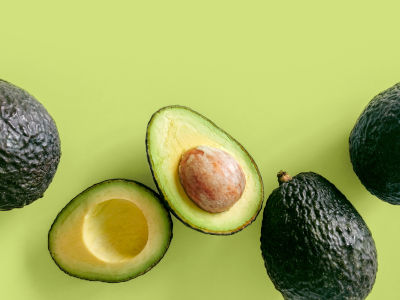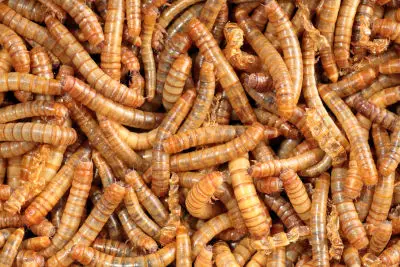Are Small Lizards Poisonous? The Truth About Their Venom
Small lizards are a common sight in many parts of the world, and people often wonder whether these creatures are poisonous. The answer to this question is not straightforward because it depends on the species of the lizard. Some small lizards are indeed poisonous, while others are harmless.
One of the most common small lizards that people encounter is the gecko. These creatures are found in many parts of the world, and they are not poisonous. Geckos are known for their ability to climb walls and ceilings, and they are often kept as pets. While they may look intimidating, they are harmless to humans.
| Are these foods dangerous for your Beardie? | |
| Avacado? Click here to learn, from this guide, if this food is dangerous |  |
| Superworms? Click here to learn, from this guide, if this food is dangerous |  |
On the other hand, some small lizards are poisonous and can pose a danger to humans. For example, the Gila monster, which is found in the southwestern United States and Mexico, has venomous saliva that can cause intense pain and swelling. Other poisonous lizards include the beaded lizard, the Mexican beaded lizard, and the Komodo dragon. It is important to be aware of the species of lizard you encounter and to take precautions if necessary.
Overview of Small Lizard Toxicity
Small lizards are a common sight in many parts of the world, and they are often kept as pets due to their fascinating appearance and behavior. However, there are some concerns regarding their toxicity and potential harm to humans. In this section, we will provide an overview of small lizard toxicity and address some common misconceptions.
Common Misconceptions
One of the most common misconceptions regarding small lizards is that they are all poisonous. While it is true that some species of small lizards are toxic, not all of them are. In fact, the majority of small lizards are harmless to humans and pose no threat whatsoever.
Another misconception is that all small lizards are venomous. While some species of small lizards do produce venom, not all of them do. In fact, most small lizards are not venomous and do not pose a threat to humans.
Toxicity Variance Among Species
The toxicity of small lizards varies greatly among species. Some species, such as the Gila monster and the beaded lizard, are highly toxic and can cause serious harm to humans. Other species, such as the anole lizard and the gecko, are harmless and pose no threat.
It is important to note that even among toxic species, the level of toxicity can vary. Factors such as age, diet, and geographic location can all impact the toxicity of a particular species. Therefore, it is important to exercise caution when handling any small lizard, and to research the specific species before handling it.
In conclusion, while some small lizards are toxic and potentially harmful to humans, not all of them are. It is important to understand the differences in toxicity among species and to exercise caution when handling any small lizard.
Identifying Poisonous Lizards
Physical Characteristics
Identifying poisonous lizards can be a difficult task, as not all lizards are venomous. However, there are some physical characteristics that can help distinguish poisonous lizards from non-poisonous lizards. One of the most common physical characteristics of poisonous lizards is the presence of enlarged, grooved teeth. These teeth are used to inject venom into their prey.
Another physical characteristic of poisonous lizards is the presence of glands, located in the lower jaw, that produce venom. These glands are often visible as a bulge on the side of the lizard’s head. Poisonous lizards may also have brightly colored skin, which can serve as a warning to potential predators.
Habitat Indicators
Another way to identify poisonous lizards is by looking at their habitat. Poisonous lizards are often found in hot, dry environments, such as deserts and arid regions. They may also be found in tropical rainforests and other humid areas.
Poisonous lizards are often nocturnal, so they may be difficult to spot during the day. However, they may leave behind signs of their presence, such as shed skin or droppings. It is important to be cautious when exploring areas where poisonous lizards are known to live, as they can be dangerous if provoked.
Overall, identifying poisonous lizards can be a challenging task, but by understanding their physical characteristics and habitat indicators, it is possible to differentiate them from non-poisonous lizards. If you are unsure whether a particular lizard is poisonous or not, it is best to err on the side of caution and avoid contact with it.
Safety Measures and First Aid
Preventive Strategies
To prevent exposure to small lizard venom, it’s important to take the following preventive measures:
- Wear gloves when handling small lizards
- Keep small lizards away from children and pets
- Avoid contact with small lizards in the wild
- Keep small lizards out of your home
Immediate Actions Post-Exposure
If someone has been bitten or exposed to small lizard venom, it’s important to take the following immediate actions:
- Stay calm and keep the affected area still
- Wash the affected area with soap and water
- Apply a cold compress to the affected area to reduce swelling
- Seek medical attention if symptoms worsen or if the affected person experiences difficulty breathing, chest pain or muscle weakness.
It’s important to note that while small lizards may carry venom, they are not typically considered dangerous to humans. However, it’s always best to take precautions and seek medical attention if necessary.
Impact on Humans and Pets
Small lizards are generally not poisonous to humans or pets. However, some species of small lizards may carry harmful bacteria or parasites, which can cause illness in humans and pets.
It is important to avoid handling small lizards, as they may bite or scratch when they feel threatened. If a bite or scratch occurs, wash the affected area with soap and water and seek medical attention if necessary.
Pets, such as cats and dogs, may be curious about small lizards and attempt to play with or eat them. This can lead to injury or illness, especially if the lizard is carrying harmful bacteria or parasites. Pet owners should supervise their pets when they are outside and discourage them from interacting with small lizards.
In summary, while small lizards are generally not poisonous, they can still pose a risk to humans and pets. It is important to take precautions when interacting with small lizards and to seek medical attention if necessary.